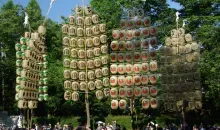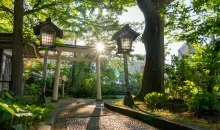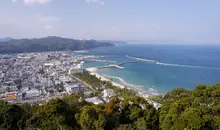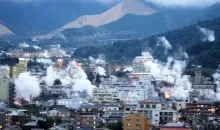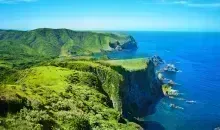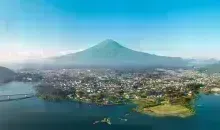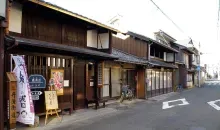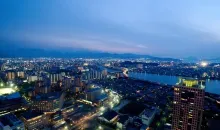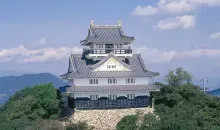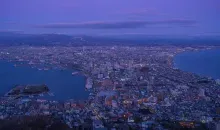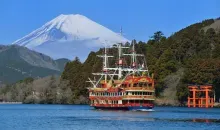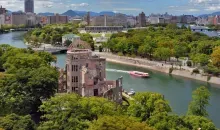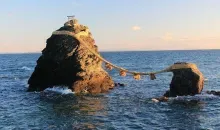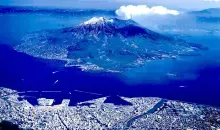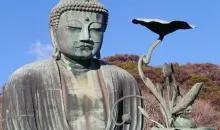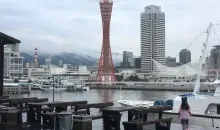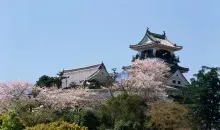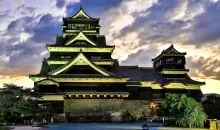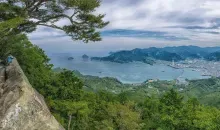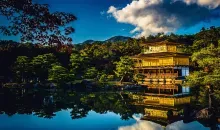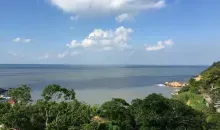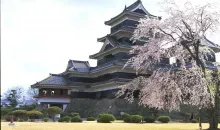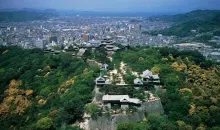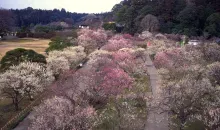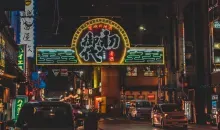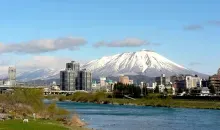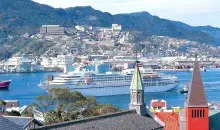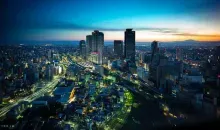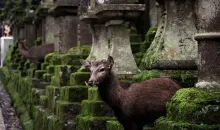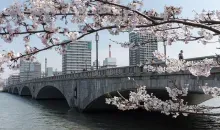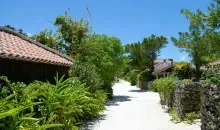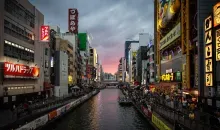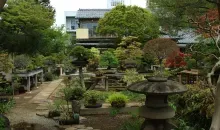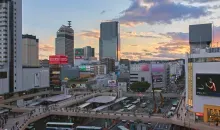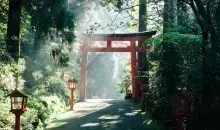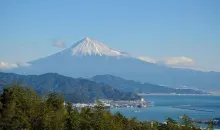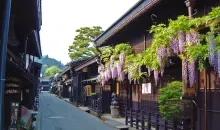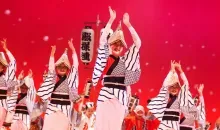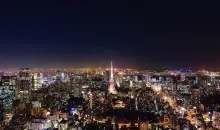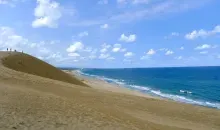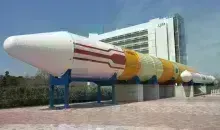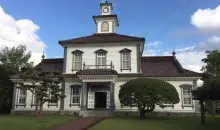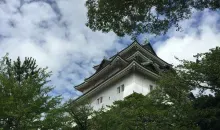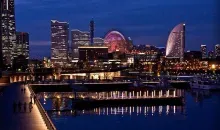Toyama 富山市
- Published on : 23/01/2025
- by : EP
- Youtube
Nestled along the Japan Sea coast in central Honshu, Toyama is a hidden gem brimming with unique experiences. Just a two-hour bullet train ride from Tokyo or a 23-minute journey from Kanazawa, Toyama is renowned for its fresh seafood from Toyama Bay and its thriving glass art scene. Visitors can see, buy, or even create their own Toyama glass art. As a gateway to the Japan Alps, Toyama offers hiking adventures and scenic railway journeys through breathtaking mountain ranges and gorges. Join us as we uncover the wonders of Toyama, where gastronomy, nature, art, and culture converge.
Nearest Airport
Toyama Airport (TOY):
- 25 minutes by bus to JR Toyama Station
- 15 minutes by taxi to train station
Train Stations
Toyama Station:
- JR Hokuriku Shinkansen and Takayama lines
- Ainokaze Toyama Railway line
- Toyama Chiho RailwayDistricts
Kibamachi - Toyama Prefectural Museum of Art and Design
Honmaru - Toyama Castle Ruins and Sato Memorial Museum of Art
Kurehayama Park - Toyama Folkcraft Village
Iwase – Meiji Period buildings and six Michelin listed establishment on one street
Toyama Travel Guide
Toyama is the capital of Toyama prefecture, in central Honshu on the Japan Sea coast. Toyama is the center of Japan's pharmaceutical industry and also has a strong decorative glassware tradition. Toyama may be less well known for tourism than the nearby "Little Kyoto" that is Kanazawa further west, but spacious, pleasantly laid out Toyama is a gateway to skiing, snowboarding and hiking in the Japan Alps, and has numerous points of scenic, cultural and artistic interest that make it a memorable tourist destination - easily reached by free shuttle buses that criss-cross the city.
Things to see and do in Toyama
Toyama Castle is set in big, broad Toyama Johshi Park in the center of the city. The castle was first built in the Edo period and was well restored after World War II. Toyama Castle contains the Museum of Local History. The Sato Memorial Art Museum is also in Toyama Johshi Park and exhibits ceramics used in the tea ceremony, and other antiques. The Toyama International Conference Center is just five minutes' walk south of the castle. Nearby, &;DEPARTMENT PROJECT is a gallery and shop showcasing local craftsman, artists, and designers, complemented by a café serving regional food and drinks.
The Matsukawa River flows along the northern edge of Toyama Johshi Park, and a Matsukawa River Cruise along it is particularly pleasant in the spring cherry blossom-viewing season. As well as cherry blossom trees, the river banks are lined with statues made by local artists.
Fugan Canal Kansui Park is a water-centered recreational park about 500 m north-west of Toyama Station, with a cafe and restaurant, and Tenmonkyo Bridge with its two observatory towers. Toyama Prefectural Museum of Art and Design, housed in a stunning building designed by renowned architect Hiroshi Naito, maximizes its canal and mountain views with floor-to-ceiling windows that treat the scenery as an integral piece of art. The museum's permanent collection and exhibitions feature works by some of the world's most famous modern artists and designers, alongside pieces by Japanese and Toyama artists. The museum boasts a rooftop garden and a children’s playground, offering spectacular views of the Tateyama mountains. Fashion lovers will also admire the uniforms of the staff, designed by acclaimed designer Iseey Miyake. From Fugan Canal Kansui Park, visitors can take a cruise north up the canal about 2 km to the Nakajima Lock, an early 20th century lock gate modeled on those on the Panama Canal and then about another 3 km to the port town of Iwase on Toyama Bay.
Kurehayama Park
Toyama Folkcraft Village is set in the pleasant wooded hills of Kurehayama Park just west of the city center and contains several museums dedicated to the area's arts and crafts: including ceramics, tea, clay dolls, glass, medicines, local history and art. Toyama Folkcraft Village is accessible by bus from outside the CiC Building across from Toyama Station (ask the tourist office for details).
Chokeji Temple is nearby the Toyama Folkcraft Village, and is known for its 500 statues of rakan - followers of the Buddha - arranged on the hill behind the main temple building
Toyama Glass
Toyama is home to the highest number of glass artists in Japan outside Tokyo. The region’s glass art is distinguished by the absence of unified techniques or characteristics, instead highlighting the unique styles of individual artists. Visitors can explore several museums showcasing this diverse glass art, browse galleries where Toyama glass is available for purchase, and even participate in hands-on workshops at a local studio. The Toyama Glass Art Museum, 108 minutes walk south-east of Toyama Castle, was designed by architect Kengo Kuma and opened in 2015. This striking building with a superb interior to match includes the municipal library and a museum shop selling affordable, stunning glasswork.
The Toyama Glass Studio is accessible from JR Toyama Station on a bus bound for Toyama Daigaku Fuzoku Byoin; alight at the "Family Mart Mae" bus stop, and it is a 5-minute walk from there. Here you can watch glass artists at work, peruse and shop the extensive gallery, and even join a workshop to make your own paperweight or ‘art wine glass’.
Toyama Sushi
Toyama is renowned across Japan for its bountiful seafood sourced from the depths of Toyama Bay. The unique topography of the bay, with its steep ocean floor, facilitates easy access to prime fishing grounds. Fishing here feels akin to plucking fish from a giant aquarium—the short journey back to port ensures the catch remains impeccably fresh. This freshness is one of the key ingredients behind the delectable fish of Toyama Bay, which includes delicacies like yellowtail, firefly squid, snow crab, and white shrimp. Among the culinary highlights is Toyama’s original masu-zushi, a form of pressed sushi with trout enveloped in fragrant bamboo leaves. Perfect for an on-the-go meal, grab a serving of masu-zushi as an ekiben lunch box to savor on your bullet train journey departing from Toyama.
Toyama Bay - Iwase
North of Toyama Station lies the historic Iwase Port area in Toyama Bay. Iwase features well-preserved traditional buildings from the Meiji Period (1868-1912), a time when Toyama was a major trading center on the Sea of Japan coast. Notable sites include the Baba Family Residence and various historic shipping agency houses along Omachi Street (Iwase Streetscape). This area is also a culinary hotspot, boasting six Michelin-listed restaurants, the KOBO craft beer brewery, and Saseki sake bar by the esteemed Masuda Sake Brewery. Visit the the three, pleasant, white sand beaches nearby for swimming: Yaezuhama Beach, Iwasehama Beach and Hamakurosaki Beach. Take the Portram Light Rail train from the station to Iwasehama or take a sightseeing cruise from Fugan Canal Kansui Park in central Toyama City to the port town of Iwase.
Toyama Festivals
Toyama has a number of interesting festivals, including the quirky All Japan Chindon Contest (Zen Nihon Chindon Concours) for traditional street musicians (listen to some chindon sounds), held in Toyama Castle Park in April, and the Toyama Summer Fireworks Festival held every August. More historic festivals include September’s Etchu Owara Kaze-no-Bon, where several thousand paper-covered lamp stands illuminate the townscape of old wooden houses and storehouses. Men and women dressed in happi coats and yukata dance through the hillside village to the accompaniment of live music featuring shamisen, kokyu, and taiko drums. In May, the Yatsuo Hikiyama Festival takes place, with lantern-covered floats rolling through the old streets. Crowds gather to watch the floats and enjoy street food.
Tateyama Kurobe Alpine Route
Toyama is the main point of access for visitors traveling on to the volcanic mountains and hot-springs (onsen) of Tateyama, Shinano-omachi, Kurobe and Unazuki, heading south-east down to neighboring Nagano prefecture. The mountain routes through Chubu Sangaku National Park and its awe-inspiring Tateyama Mountain Range are only accessible in the summer months, usually May-November. The journey via various means of transport between Toyama and Shinano-omachi is known as the Tateyama Kurobe Alpine Route, and covers a distance of about 90 km (56 miles).
From Toyama Station take the charming Toyama Tateyama Line train to Tateyama, then cable car and bus to Murodo with excellent views at an altitude of over 2400 meters. Murodo (室堂) at 2450 meters above sea level is the highest point along the Tateyama Kurobe Alpine Route.
From Murodo there are several long-distance hiking routes including one south to Kamikochi.
The approximately 1 km-long Yuki-no- Otani Snow Wall Walk can be visited from mid-April to June from Murodo Station with snow walls reaching heights of up to 20m.
Heading north, Kurobe Gorge is Japan's deepest gorge and can be reached from Kurobe town on the coast and Unazuki Onsen by narrow gauge railway (torokko). There is a trolley bus and then a bus from Kurobe Lake created by the massive Kurobe Dam via Ogisawa down to Omachi and then from there a train to Matsumoto on the Oito Line.
Unazuki Onsen is an ideal base for exploring Kurobe Gorge. The hot-spring resort, the largest in Toyama Prefecture, features onsen ryokans, and hotels with splendid nature views, along with charming streets dotted with shops and restaurants serving local seafood and mountain produce.
Access - Getting to Toyama
- Rail
Served by the JR Hokuriku Line tand JR Express Thunderbird to Osaka (2 hours, 55 minutes) and Kyoto (2 hours 30 minutes).
※The Hokuriku Shinkansen extension to Tsuruga opened in March 2024, so you can now take the Hokuriku Shinkansen to Tsuruga and change to the JR Express
Thunderbird to Osaka or Kyoto.
To Tokyo take the Hokuriku shinkansen (approx 2 hours 10 mins) by Kagayaki train or 2 hours 30 minutes by Hakutaka train. From Toyama to Tokyo the Kagayaki
stops at Nagano, Omiya and Ueno. The slower Hakutaka service stops at Kurobe-Unazuki Onsen, Itoigawa, Jyoetsu-Myoko, Iiyama, Nagano, Takasaki, Omiya, and
Ueno.
To Nagoya take the Hida service via Takayama (3 hours, 35 minutes) on the JR Takayama Main Line or the Shirasagi service via Maibara on the JR Hokuriku Main Line (3 hours, 35 minutes). Alternatively take the Tokaido Shinkansen from Nagoya changing at Maibara to the express train for for Kanazawa and then on to Toyama.
Toyama now connected by Hokuriku Shinkansen to Kanazawa in about 20 minutes or less depending on which train you travel. The Tsurugi and Hakutaka are an all-stop service between Toyama and Kanazawa with Shin-Takaoka Station for Takaoka city just 8 minutes from Toyama Station. To reach Takaoka Station from Shin-Takaoka Station change to the Johana Line (3 minutes). Alternatively Takaoka Station is 18 minutes on an Ainokaze Toyama Railway train from Toyama Station.
Getting Around Toyama
Toyama is well served by a system of street cars (trams) and buses running throughout the city and the Portram light rail to Iwase, the old port area. It is also possible to rent bicycles at Toyama Station and other places around town.
The Centram street car does a loop of the central area of Toyama City, including Toyama Castle and Citizens; Plaza, which stages the once or twice monthly Etchu Oteichiba Market. One-day tickets allowing unlimited rides on local trains, railways, and buses cost 650 yen for adults and 330 yen for children.
Travel to Toyama with a Regional Japan Rail Pass
Interested by Toyama
Discover other cities to explore













